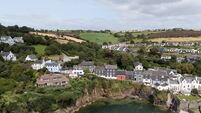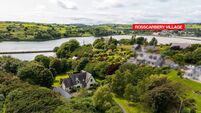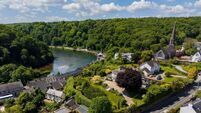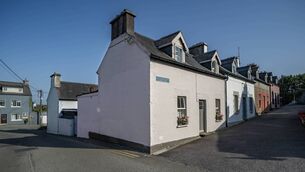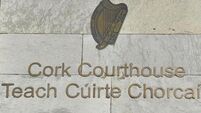Cover story: Period pearl on solid ground
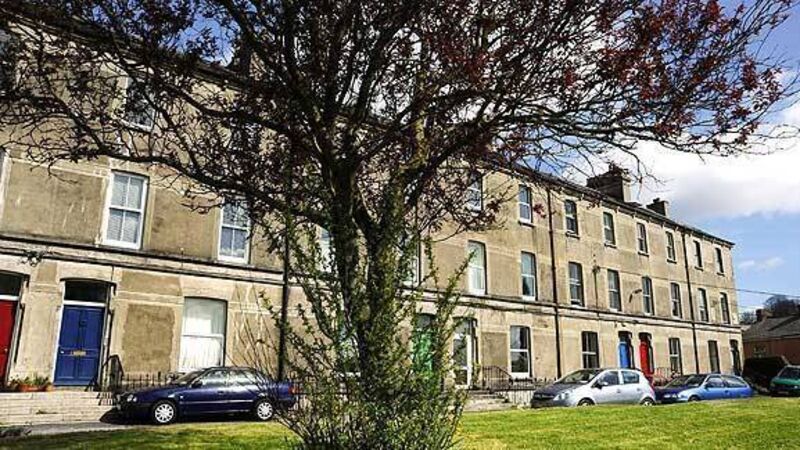
THERE’S hardly a person better qualified to appreciate the quality of the foundations under his home than the owner of 6 Alexandra Place — he’s a former Professor of Engineering at University College Cork, with publications on hydrology, geology, soils and structures, among a host of other academic interests.
Proud and caring owner for the past 25 years, the retired professor — now downsizing — says one of the particular reasons his family chose to live up on this St Luke’s Cross hillside setting was its underlying geology, of seemingly immovable red sandstone; that’s in contrast to the limestone under much of Cork city’s building and suburbs, a geological plague on and beneath the many houses of its citizens, causing erosion and subsidence like so much shifting sand.

Those rich sandstone ridges, glimpsed across the northside in cliff bluffs (eg Lower Glanmire Road) and exposed sandstone seams, is perhaps one of the reasons why so many of its terraces and individual Georgian dwellings have endured so well.
One of a terrace of well-preserved c1860s homes, No 6 Alexandra Place sits on a basement or excavated trough over six feet down, and 50’ wide front to back, and “the shape of the trough suggests that some, if not all, of the red sandstone used in the masonry walls was mined as construction proceeded from one end of the terrace to the other,” says the engaging engineer and careful custodian, adding “consequently the foundations are considerably better than the karstified limestone that underlies buildings elsewhere in the city”.
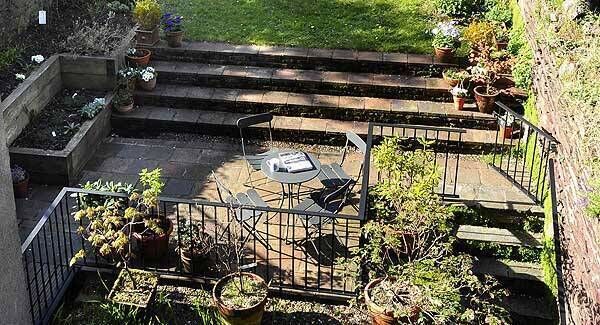
A tour of No 6 in the vendor’s company is an eye-opener, like traipsing enjoyably through a textbook brought to life; he knows its every inch and detail, appreciates its architectural detailing, its simple engineering ingenuity, its building fabric foibles — and woe to any engineer doing a standard building survey for any intending buyers who can’t back up any casual assertions of concern. No 6 Alexandra Place comes to market this month with agents Ann O’Mahony and Johnny O’Flynn of Sherry FitzGerald, guiding €425,000 and is not only one for the purists who love period-home living, but it’s a five storey accommodating home of utter convenience for urban and urbane living.
The south-facing terrace, and its curtilege including a shared or communal front garden with central lawn, shrubs, a magnificent white cherry blossom (planted by No 6’s occupants on their arrival) and parking, is just west of St Luke’s Cross and east of Military Hill, underneath what’s now the Ambassador Hotel and a 1990s terrace of architect-designed red-brick townhouses. This terrace’s residents includes a pair of highly-regarded architects and their family, who also bought into the address, aspect, history and heritage ... and, of course, good foundations.

Sherry FitzGerald describe the setting as a private enclave, set behind red-brick entrance pillars which, in early days, had gates, so gated enclaves are not at all solely a 21st century phenomenon.
The selling agents for No 6 say its caring occupants and sensitive conservation have “resulted in a house that combines all the grace and elegance of a bygone era, with all the convenience of modern day living.”
Despite being a protected structure, it’s got modern creature comforts (the adjoining end-terrace house even has solar panels) and here at No 6, there’s zoned central heating, with dual boilers and four zones, an alarm, mains services, and conserved and reworked sash windows, all working perfectly, as are the original window shutters.

Ah, the windows...? Pardon the digression — but likely buyers of No 6 will be fascinated with a detail here, as might owners of other tall period home with sash windows. There’s a clever adaptation, making life easy for widow cleaning, maintenance and painting. Copying a practice widespread in Scotland, the owners had their sash window restorer simply adapt each and every of the lower window frames, putting sturdy hinges on the frames left hand side (see p1 pic), and with a removable beading on the right side. Then, it’s a simple matter of line up the hinges, put in few screws and remove the bead on the opposite side, allowing the lower sash to swing inwards for cleaning. And, by sitting on the sill, anchoring the upper sash onto one’s lap, the upper window can be similarly cleaned or cared for. Ingenious, and appreciated by anyone thus not obliged to go several storeys up on ladders.

For those less intrigued by such arcane architectural detail delights, the house is full of simple, and/or elegant things to admire.
Practically all of the original features here are retained, or at least recalled. There’s remnants of the old bells and wires for summoning servants, as well as the old wall routings for gas pipes for lamps, and a few fittings have been kept for posterity in the kitchen, where a retained surround for a departed cast iron kitchen range recalls the Washington Street manufacturer ‘Perrott The Hive Cork.’
Internal walls are almost all lime render, and scraped back sections in the kitchen recall the original colours it would have been, as well as the painter’s name pencilled in: history writ small.
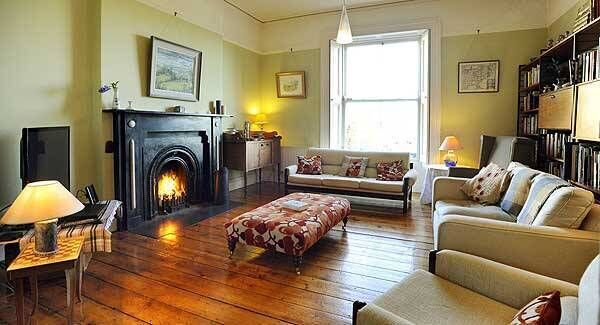
Up on floors above there’s plenty of fine plasterwork and roses on ceilings, picture rails and original dados, anaglypta papers under oil paints, fireplaces in almost every room, and some very fine reception rooms indeed.
The entry level is home to a deep hall, with two interconnected reception rooms, with 11’ high ceilings and original black slate fireplaces fore and aft. Like practically every other room in the house, the original wide pine floorboards have been stripped back and buffed to a high shine, The staircase, similarly highlighted with polished handrail, painted spindles, and carpeted with old brass stair rods salvaged from UCC’s old Honan Hostel, is elegance and elevation personified. It first leads to a first floor or ‘piano nobile’ drawing room, with several south-facing sash windows, flooded with southerly light, blessed with city views, and anchored by an impressive white marble fireplace with black cast iron insert.
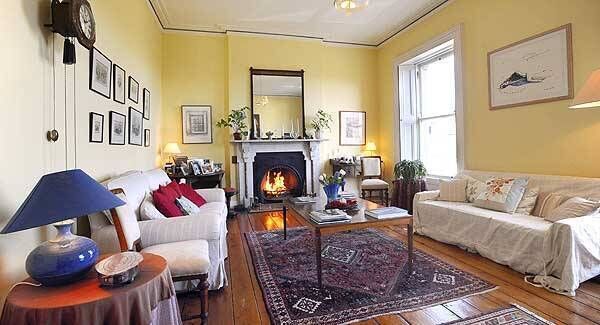
There’s a guest bedroom also, behind, at this first floor level, and then the next two floors above have four more bedrooms, with master bedroom to the front — and better views again than the drawing room below, and there isn’t a single mean room in the house. In fact, the attic rooms, with Velux windows, have enormous character, cast iron fireplace features, some exposed stone painted white, and opes over the doorways to allow air to circulate for the benefit of servants....the Victorians were among those worried by bad night air vapours or the so-called miasma, before warfare on germs won the war on such worries.
A similar ‘miasma’ ventilation feature can be seen over a doorway in No 6’s basement level, now home to a modern kitchen, dining area, and pantry, and both these lowermost and attic rooms are the levels with least ‘fine’ detailing, yet with huge historical feel. They’re redolent of days of Upstairs Downstairs, when servants bookended a house, sleeping up under the roofs, and toiling daily in and about the lower-ground levels. One of the successes here in No 6 is the retention of such memories, while still being accommodating to more modern, servant-free, family living. Just think of all the stairs being a free home gym and strider.

Despite being in the old heart of Cork city, in an area where many of the best homes were built for military men and their families (what’s now Collins Baracks is just up the hill), the terrace at Alexandra Place (earlier maps called it Alexandra Terrace) has its good measure of outdoor space, and that also lends this home to family living. There’s the communal space and parking in front, and behind are individual terraced and tiered gardens, with separate rear gate access.
No 6’s atmospheric dining and kitchen level (with white floor tiles to bounce light around) opens to a sheltered terrace, with plants here chosen for shade, the patio is surfaced with reclaimed old terracotta tiles which are used again in the steps up to the next few levels, with first a paved terrace with al fresco dining furniture, and which has a little bridge access to the building annexe/return as a second access point.
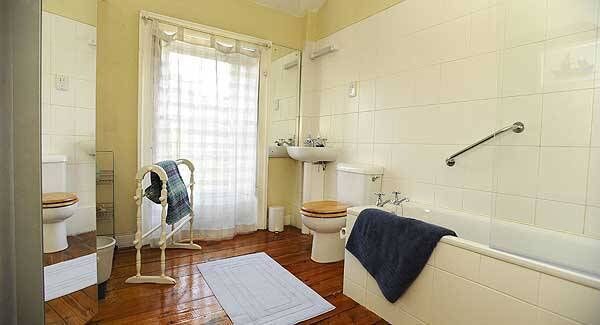
There’s raised beds for veg and herb growing, lawn, and flowering shrubs and trees, including camellias, wisteria, plum tree and bamboo, and the entire’s surrounded by high sandstone walls: the pedestrian access gate at the far end’s a bonus too.
The back walls of practically all of this terraced of seven large homes have been replastered in recent years, and some have old fire escapes, testifying to previous or current use as rentals, while the front facade of the entire row is intact old plasterwork with scooped and unusual incised detail around camber window heads in the old render, with stone sills on corbels, and old cast iron rainwater goods. Front steps are in granite, and not in a local stone, notes No 6’s eagle-eyed vendor, who feels the original accomplished architect (not recorded) may have been one of the Hill family dynasty, responsible for much of Cork’s best 19th century architecture.
A treasure.








